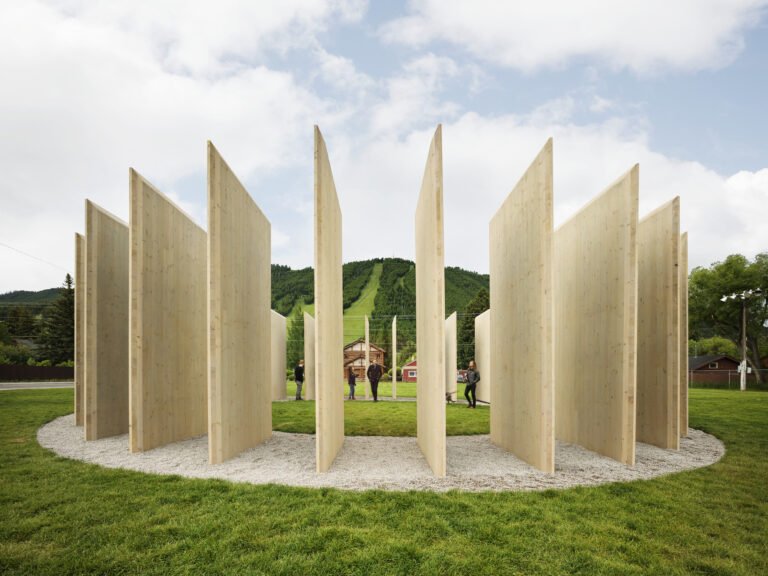CEBRA sculpts a recent desert panorama with al hosn masterplan in abu dhabi
al hosn: celebrating the history of abu dhabi
danish architecture practice CEBRA takes to abu dhabi, completing its al hosn masterplan and landscape. working in close collaboration with the city’s department of culture and tourism, the team describes the ambitious project as ‘a magical portal to a future inspired by the past.’ overall, the design was greatly informed by the heritage of the surrounding area — reinstating the qasr al hosn fort as the cultural heart of abu dhabi.
built in 1760, this fort stands as abu dhabi’s oldest and most important building. it had long stood as a watchtower to protect the only freshwater well on the island. later, it had been extended into a palace, ultimately gaining recognition as the birthplace of the capital city. the newly completed park by CEBRA is a celebration of this historic place. the landscape will conserve the site which surrounds the fort, along with the city’s ‘cultural foundation’ which dates back to the 1980’s and was designed by a group founded by walter gropius (see more here).
 images © mikkel frost (founding partner at CEBRA) | @frost_works
images © mikkel frost (founding partner at CEBRA) | @frost_works
new public spaces to respect the old
with its al hosn masterplan and landscape, CEBRA (see more here) hybridizes the historic context with a contemporary expression. by introducing this new type of locally rooted urban landscape, the project creates a coherent dialogue between the two contrasting buildings on site. the vivid public park further adds several new functions to the al hosn site, making it an asset to the entire city of abu dhabi. these include restaurants, cultural centers, a prayer hall, and an open landscape with water features and shady pocket spaces for retreat from the middle eastern sun.

reintroducing the coastal desert landscape
CEBRA architects’ al hosn masterplan emphasizes its own duality by dividing the site diagonally into two contrasting landscapes. a plain and open desert-like landscape around the qasr al hosn fort reinstates the building as a free-standing landmark on sand like it was before the modern city rapidly sprung up. opposite, a paved and programmed area with intensified planting surrounds the cultural foundation building, thus combining the desert landscape with the modern city grid structure.
the two landscapes are connected by a public urban space emerging from formations of ‘cracks’ and geometric shapes defined through an irregular voronoi pattern. the design articulates an architectural interpretation of abu dhabi island’s coastal landscape of sandbars, mangroves, and the salt flats’ distinctive cracked patterns, drawing connections between the center of today’s metropolis and the natural setting from which it emerged.

both landscape and buildings
the geometries of the urban landscape intentionally land between building and landscape, with the tone of the concrete matching the color of the natural sand. along the transitional zone, the landscape changes from horizontal planes to slanting surfaces that gradually grow into actual buildings for food and beverage facilities, ancillary functions, and culminating with a musallah prayer hall at the north-eastern corner of the site.
all components — from sitting bollards, surface patterns, lighting concept, and building volumes to the interior’s floor plans, doorways, and furnishings — are subtly integrated into the overall urban landscape topography and merge with the park to be experienced as natural landscape elements. thus, the landscape emphasises the fort and the cultural foundation as the main visual anchors.





